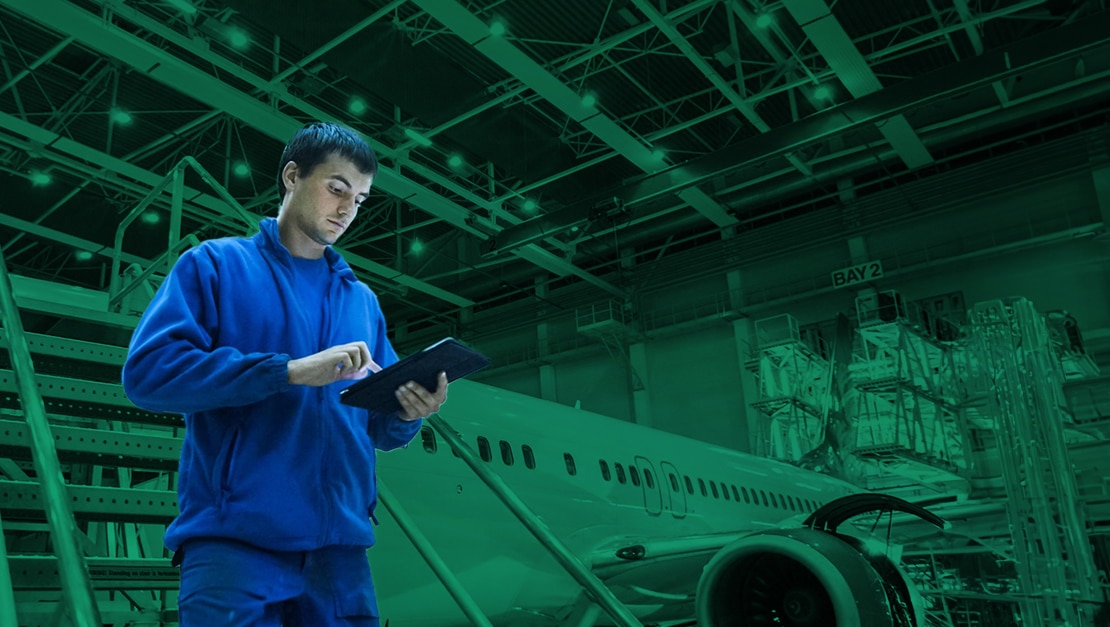Artificial intelligence (AI) has been a transformative power in industries across the board, making processes more efficient, cost-effective, and ever safer. In industries that rely on more manual and traditional processes, like manufacturing, the potential of AI to bring about meaningful, sweeping change across the board is set to change the field completely.
In manufacturing, AI is positively affecting the way companies are operating, making supply chain management more transparent, improving predictive maintenance, enhancing quality control, and more. This isn’t all just theoretical, but major companies like BMW, Adidas, and others are currently using AI technologies to improve their manufacturing operations and give themselves a competitive edge.
This blog post will examine how AI is used in manufacturing, real-world examples of its applications, challenges of implementing these new technologies to existing systems, and how speech technology like aiOla leads to further innovations in the industry.
The Foundations of AI in Manufacturing
In manufacturing, AI refers to how advanced technologies are used to make existing and new systems able to perform tasks without the need for human intervention. This can include tasks that require reasoning and problem-solving. With traditional automation, predefined, repetitive tasks are completed automatically using algorithms, but these automations can’t adapt to different conditions to improve performance. This is where AI makes manufacturing workflow automation more intelligent and flexible.
There’s more than one way AI is applied in manufacturing processes. Today, it’s being used in many different ways, though the core of AI technologies are made up of a few technologies, such as:
- Machine learning (ML): ML uses algorithms to enable machines to learn from input data, which is what allows AI technology to adapt to changing conditions and improve performance. In a manufacturing setting, ML can learn more by analyzing patterns and trends which can improve predictive maintenance, quality control, and demand forecasting.
- Computer vision: Using cameras and sensors, computer vision uses AI to visually interpret data, allowing machines to work on identifying objects and anomalies. This allows manufacturers to better identify defects using robotic systems.
- Natural language processing (NLP): NLP allows machines and humans to communicate more seamlessly. By learning human patterns of speech, NLP systems can facilitate communication between humans and machines or robots on the manufacturing floor, helping them to work together towards company goals.
These technologies and others are all a part of the AI ecosystem in manufacturing that helps organizations boost efficiency, improve the quality of their products, and establish more agile and responsive production lines.
How Is AI Used in Manufacturing: Key Applications
Looking at how AI is used in manufacturing, it’s clear that the technology has multiple applications that permeate through every aspect of the industry. From impacting production times to customer satisfaction, AI has the potential to change the way much of the manufacturing industry operates. Let’s take a closer look at some key applications and how companies are applying these new operations to their processes today.
1. Predictive Maintenance
Predictive maintenance relies on AI algorithms to analyze patterns of data from machinery. It looks at factors like temperature, usage trends, and vibrations to predict potential failures before they take place. Manufacturers can schedule maintenance proactively by identifying these potential issues, helping them reduce downtime and maintenance costs.
An Australian steel company, BlueScope, turned to Siemens’ Sensye Predictive Maintenance platform to enhance its operations. With this technology, BlueScope was able to integrate sensors for machine monitoring to simplify tasks and reduce maintenance costs. It also helped the company avoid delays and improve alignment with its new digital transformation strategy.
2. Quality Control Enhancement
AI technologies like computer vision and ML can improve the quality of manufactured products by identifying defects more accurately, speeding up employee quality control procedures. By automating inspection processes, manufacturers can reduce defects and errors and ensure more products that hit the market are of higher quality.
Huawei, a modern manufacturing enterprise, developed an Industrial AI-Powered Quality Inspection Solution that offers over 800 industrial-grade image processing tools and can be applied to multiple industries. This solution helps manufacturers with quality-related challenges, and when refrigerator manufacturer Midea Group applied it to its production operations, the solution increased defect detection accuracy by 10% and improved efficiency.
3. Supply Chain Optimization
Manufacturers are turning to AI technologies to improve supply chain automation and management to better forecast demand and optimize inventory levels. Since AI and ML have the power to quickly analyze large data sets, they can easily identify trends that help inform supply chain decisions, leading to potentially reduced costs and improved efficiency.
Shoe manufacturer, Adidas, is using ML to power its forecasting engine, helping the footwear giant forecast consumer e-commerce demand more accurately. By using different AWS Professional Services, Adidas is now producing weekly automated forecasts for different products, enabling them to optimize stock levels and production operations.
4. Robotics and Automation
AI improves the abilities of robotics and automation systems, turning them into solutions that are more intelligent and adaptable. With AI, robotics can perform more complex tasks and collaborate with other systems in a production area while working alongside humans to mimic certain decision-making processes.
Using cutting-edge advanced humanoid robots provided by Figure, BMW aims to improve its car manufacturing procedures at certain plants. The deployment of these AI-powered humanoid robots is meant to speed up production while reducing the workload on employees, making manufacturing safer, more productive, and more cost-efficient.
5. Design and Product Development
Generative AI in manufacturing encourages innovation in product development by helping teams create different design options based on specific parameters. This influences product development and manufacturing as well as manufacturers can explore new design possibilities that could be easier and more cost-effective to produce while simultaneously optimizing product performance.
Autodesk, a software company, helped Airbus envision and design an aircraft concept of the future. Bastian Schaefer, Innovation Manager at Airbus, was on a mission to find ways to make jetliners more efficient and comfortable through a vision of a plane in 2050. Using Autodesk and generative AI, Schaefer was able to create designs of a strong and lightweight cabin partition which would enable planes to become more eco-friendly.
Challenges and Considerations for Using AI in Manufacturing
While using AI-driven systems in manufacturing comes with several benefits, there are still challenges to overcome, particularly in the implementation process. Integrating new technologies into legacy systems isn’t always simple and requires patience, forethought, and substantial planning.
Some factors to take into consideration before implementation include:
- High initial costs: Software for AI in manufacturing can get pricey and often incurs a significant upfront investment in technology, infrastructure, and training
- Workforce training: Integrating new technologies requires training and upskilling, which can be challenging, time-consuming, and even met with resistance
- Data security concerns: AI systems rely on a lot of data, meaning companies first need to address privacy and security concerns before implementation
- Ethical considerations: Ethical questions are often raised with AI regarding data bias, job displacement, and its impact on society, and these concerns should be addressed internally and externally to smooth along the adoption process
- Responsible development: AI adoption needs to be developed responsibility by encouraging transparency, accountability, and open lines of communication to mitigate unethical use and potential risks
Facilitating AI in Manufacturing with aiOla’s Speech Technology
With so many different AI solutions on the market, choosing the best one for your manufacturing operations can also be a challenge. While some tools may have longer and more complex implementation timelines, others are quicker to adopt, allowing your organization to reap the benefits of AI sooner. aiOla is one such technology.
aiOla is a speech AI technology that uses the power of speech and spoken language to trigger automations, workflows, and collect critical data. Often overlooked and unrecorded, spoken data has the potential to make manufacturing operations more efficient. Here’s how:
- aiOla can drastically help your organization cut down on inspection time by making manual processes completely speech-activated, reducing time spent on inspections by up to 45%
- By gathering important data through speech, aiOla can complete processes like audits, inventory analysis, and other workflows
- aiOla helps manufacturers with predictive maintenance, helping organizations increase production and resulting in a 30% increase in uptime
- By keeping operations completely hands-free and relying 100% on speech, manufacturing processes are safer for employees
aiOla accomplishes all of this in over 100 languages, including different accents and dialects. Additionally, aiOla can function in any acoustic environment and be completely tailored to any industry jargon with astounding accuracy, helping companies ditch traditional manual and paper-based manufacturing operations for a more modern solution.
Looking Ahead at AI in Manufacturing
When considering how AI is used in manufacturing currently, and the way new AI technologies are emerging to drive even more change, companies need to start implementing these solutions to stay competitive and innovative. AI solutions, like aiOla’s voice technology, are enabling rapid growth in the manufacturing industry by streamlining efficiency, reducing costs, and making workflows more intuitive.
Book a demo with one of our experts to learn more about how aiOla is changing how AI is used in manufacturing.









